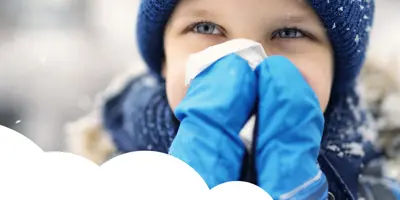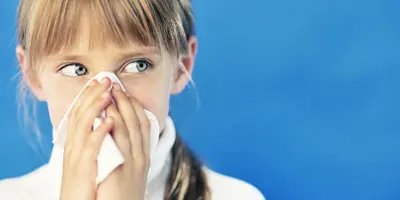9 people found this helpful

Sneezing is a perfectly natural response to allergies, a cold or the flu, but there is a right way and a wrong way to do it. The big question is how do you sneeze and cough without passing on illnesses to others?
In this guide, health and hygiene are our top priorities as we provide tips on how to cough and how to sneeze properly. Don’t suppress the need to sneeze - follow our simple sneezing rules to learn exactly how to sneeze without spreading germs.
How to cough properly
Learning the coughing and sneezing rules isn’t just about politeness or etiquette, it’s about hygiene and health. When you sneeze or cough, you release respiratory droplets from your nose and mouth. These carry viral and bacterial particles, which can contaminate whatever they touch. We often sneeze and cough when we’re suffering with a respiratory illness like flu, and we certainly don’t want to pass on infections to others.
Sneezing into the air: Sneezing spreads germs into the atmosphere, and those airborne viruses can be breathed in by others.
Sneezing onto hard surfaces: When the germs land on objects they can survive for hours. They could be transferred onto someone else’s skin when they touch it.
Sneezing into your hands: When you catch a sneeze, all those germs spread onto your hands, and transfer onto everything you touch. This is particularly problematic with things like door handles, as so many other people will also touch them – and your germs too.
Learning how to sneeze and how to cough properly is critical to maintaining health. The best way to cough is to do it into a tissue, while being sure to cover your mouth and nose. And always remember to wash your hands with soap and water afterwards!
How to sneeze properly without spreading germs
How do you sneeze to avoid spreading germs? The same way you would when you cough! Here’s an easy three-step guide on how to sneeze hygienically:
- Cover your mouth and nose with a tissue.
- Throw the tissue away immediately.
- Wash your hands thoroughly with soap and clean running water.
Keep a some of the soft stuff in your pocket like Cushelle quilted toilet paper to catch sneezes and help stop the spread of germs.
There are occasions when your sneeze or cough will take you by surprise and you won’t be properly prepared. Here’s what to do in those scenarios:
- Don’t have a tissue? Sneeze or cough into your elbow or upper sleeve instead and wash it as soon as possible.
- Don’t have access to running water? Use an alcohol-based hand sanitiser.
- Accidentally sneezed onto a hard surface? Clean it immediately with a disposable disinfectant wipe.
You might be tempted to hold in sneezes, but it’s important to let them out. The reason we sneeze is to remove irritants and foreign particles from our upper airways, particularly the nasal cavity. Those irritants could be pollen or dust, or it could be nasal congestion.
Sneezing is a protective reflex, so we should respect the body’s need to expel whatever it doesn’t want inside it. And now that you know how to cough and how to sneeze without spreading germs, you’ll know exactly what to do the next time it happens.
Related articles
5 Home Remedies for a Tickly Cough
SOS: Tickly cough home remedies needed! Here at Cushelle we've put together a few tips to get rid of a tickly cough: from honey to soup, read on for more!

Stuffy nose at night: how to get rid of a blocked nose at night
Discover some of the best ways to deal with a blocked nose at night. Find our simple home remedies here plus tips on the best way to sleep with a blocked nose.

Debunking 'man flu' in 3 arguments
Have you ever wondered whether man flu exists or not? Find three key arguments that suggest that man flu may well be a real thing, here.

4 tips for unblocking a newborn’s nose
Learn how to blow a baby's nose and how to teach nose blowing to older children with this guide on how to clean baby nose blockages.

Child with a cold? Discover 7 effective cold remedies for toddlers
Find out what to do when your baby has a cold. Use our 7 home remedies for baby cough and chest congestion to provide comfort and help them feel better.

Cold and Flu: What’s the Difference?
What is the difference between a cold and the flu? Find out how cold and flu symptoms differ, and the answer to the age-old question: ‘have I got a cold or flu?’



